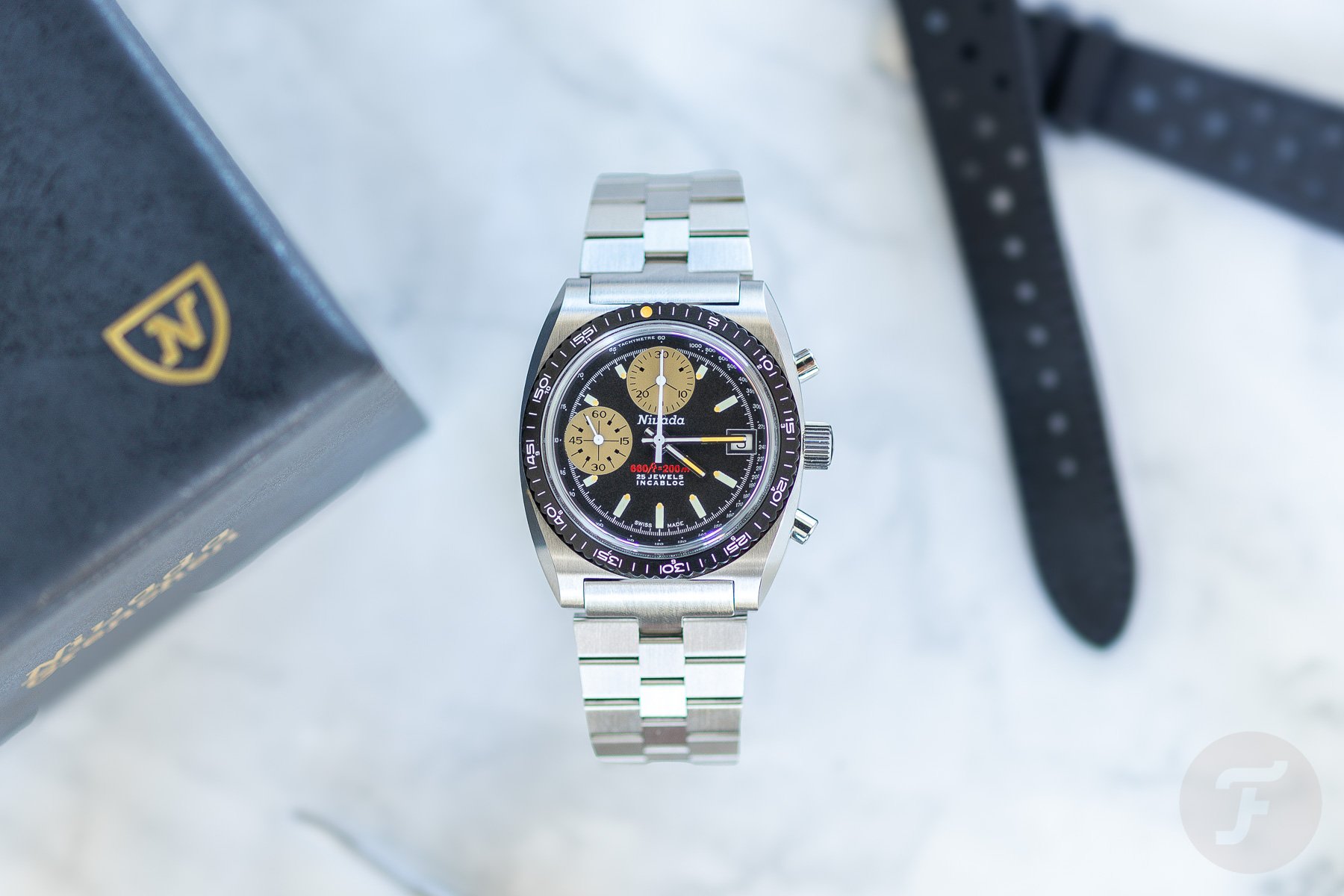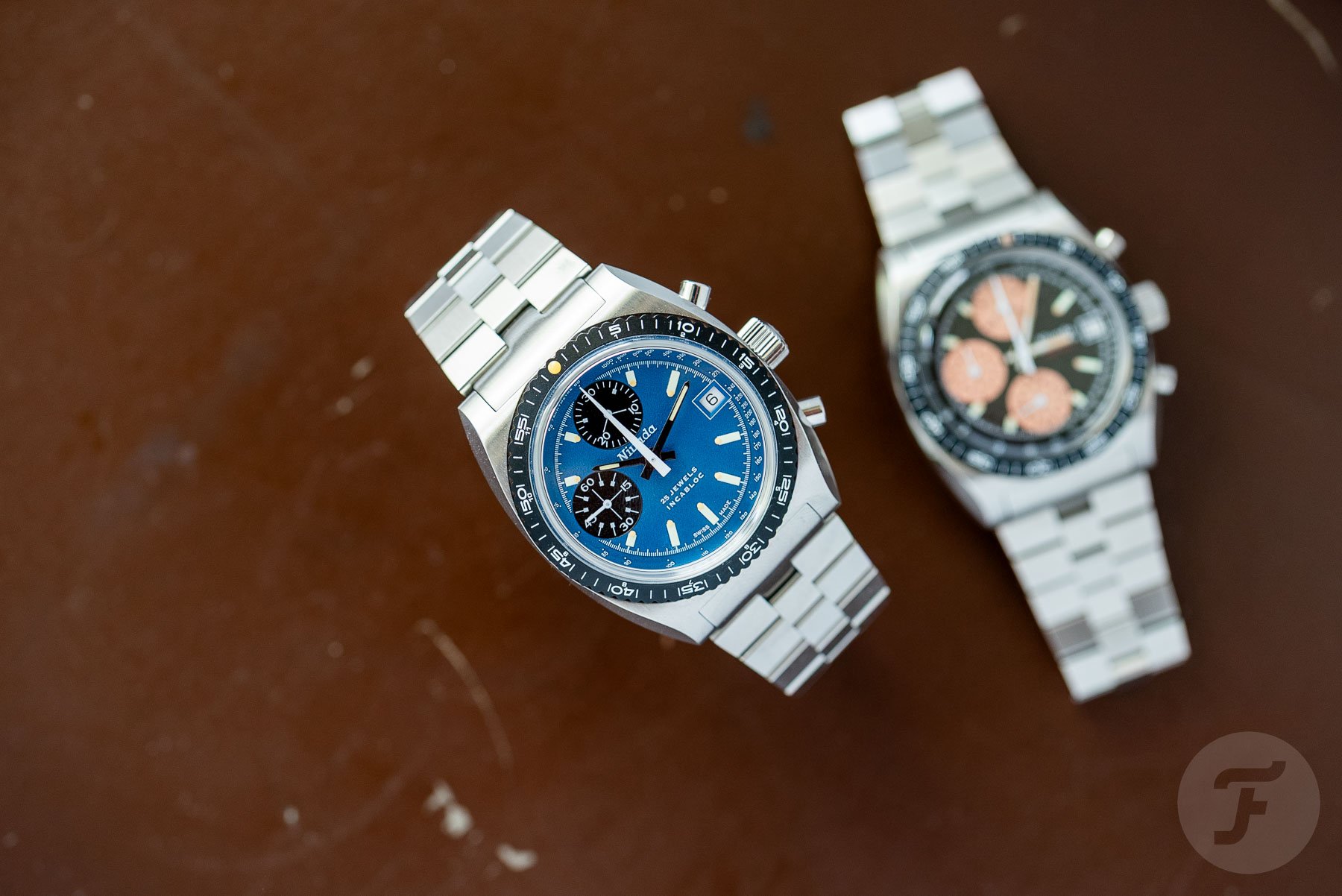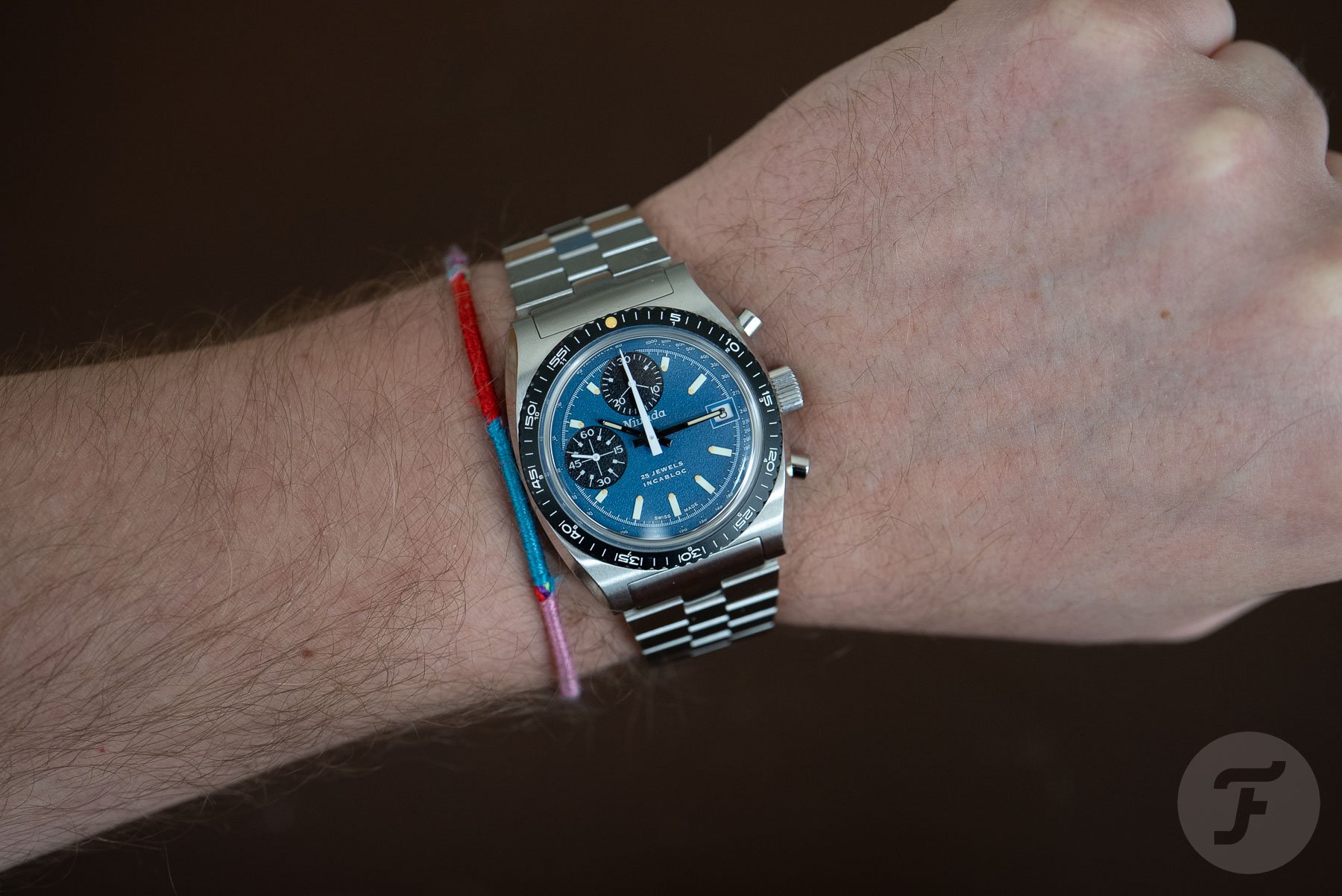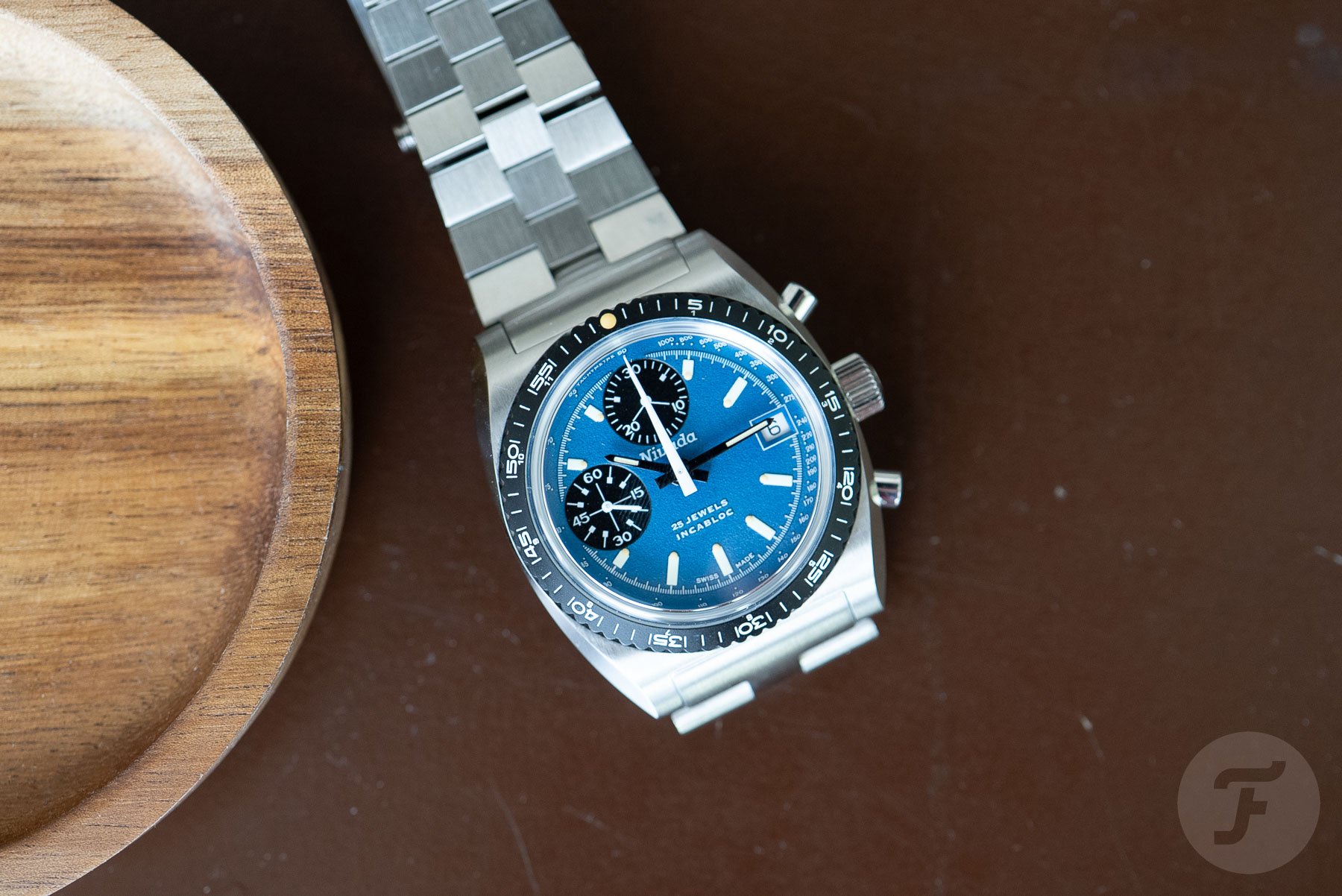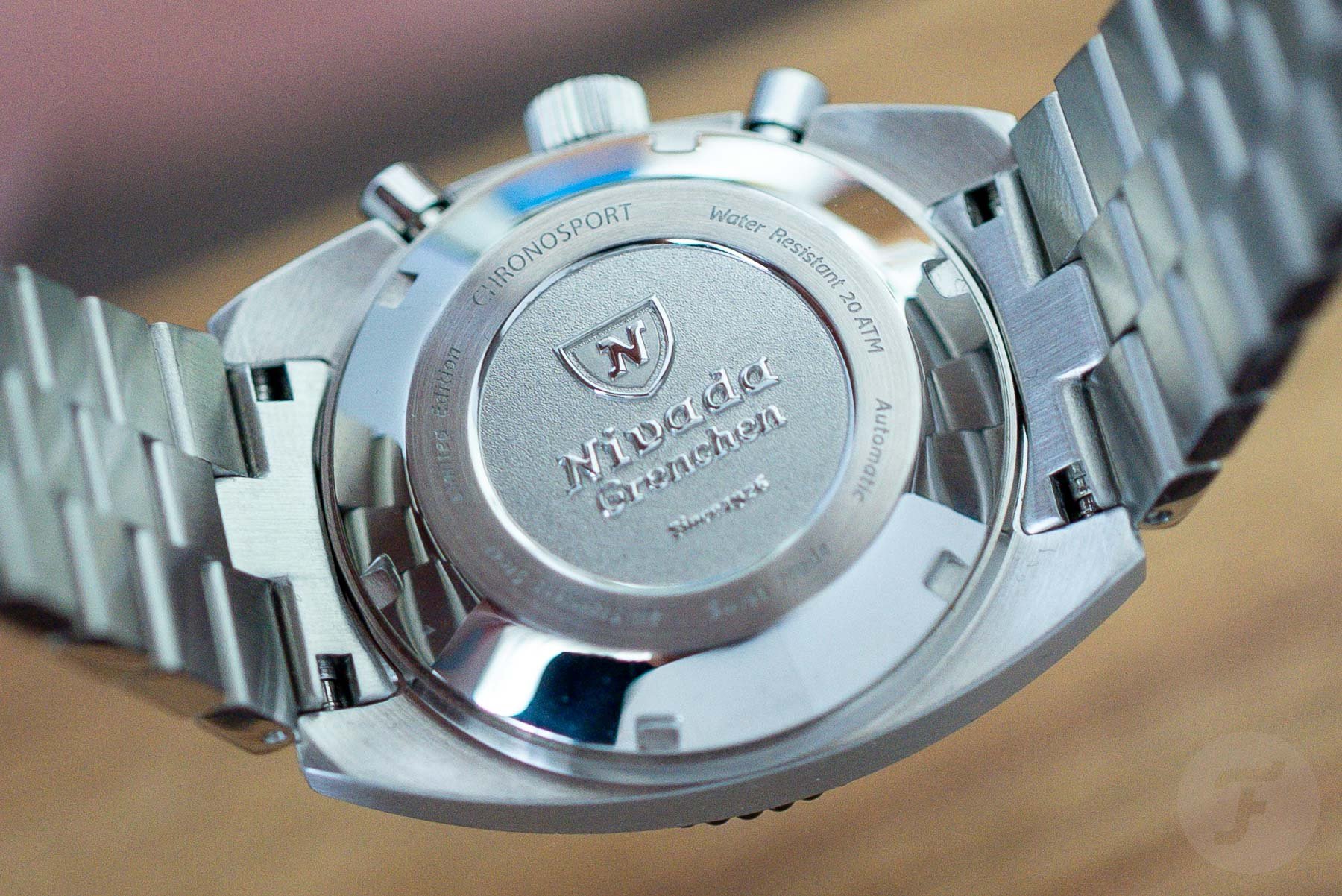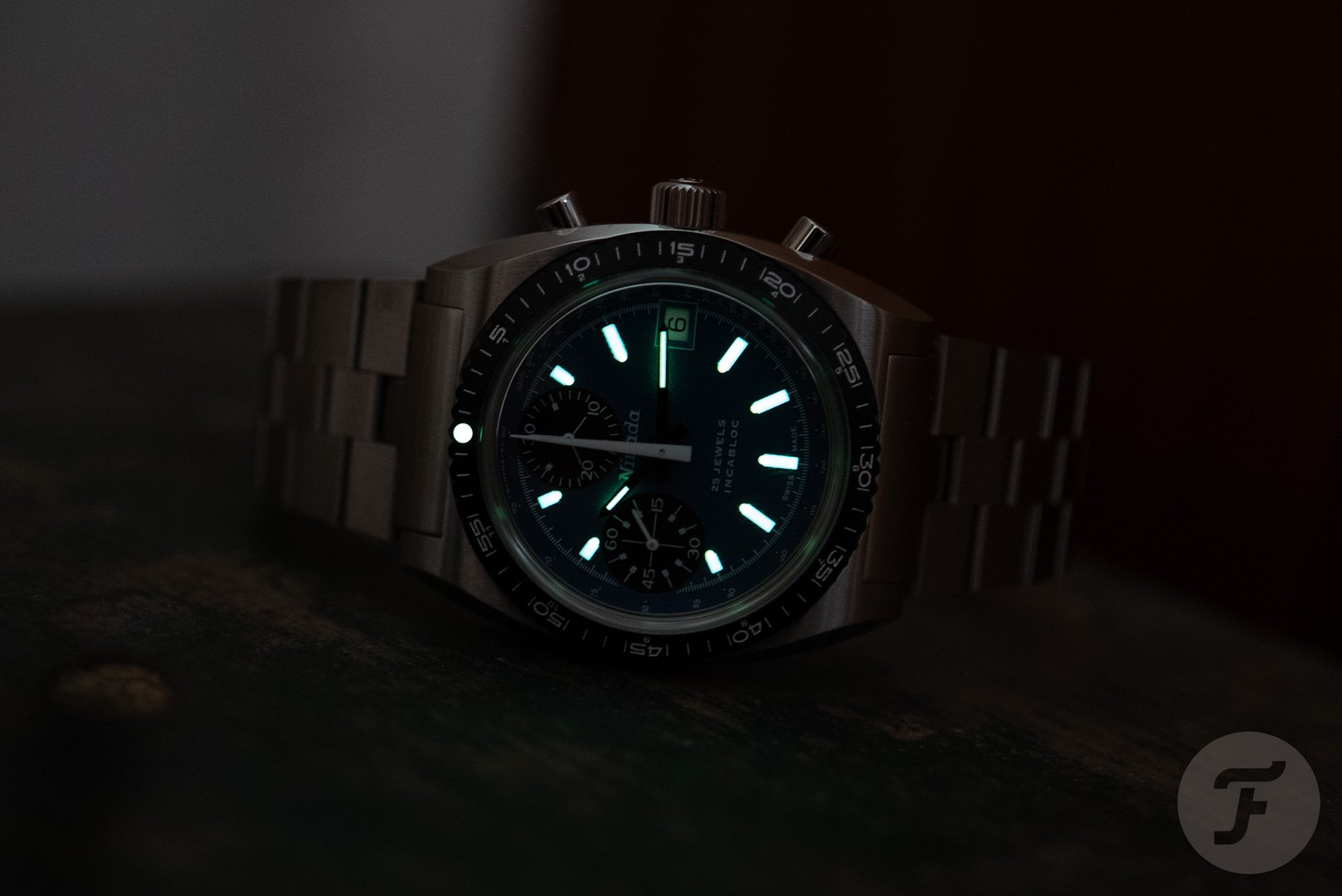Hands-On: The New Nivada Grenchen Chronosport Blue
Spring started strong for Nivada. The Swiss watch brand released two new models in its Chronosport line, expanding it to five watches. We were lucky enough to try both the automatic and the mecaquartz versions. In this review, I’ll go hands-on with the former, namely, the Chronosport Blue. But before we get into that, let me give you a quick rundown of the new and existing timepieces.
You may have read my review from last August about the then-new Nivada Grenchen Chronosport. The new Chronosport Blue is the latest version of this model. However, let’s look at the model line as a whole.
The Nivada Chronosport
Nivada’s modern Chronosport line consists of four regular models and one limited edition. The original Chronosport, per my review above, came in two versions. You could get it with modern white lume, or for a more vintage feel, you could opt for yellow lume. My review watch had the latter. Soon after, Nivada released the Chronosport Mecaquartz to serve an audience with less budget but equal thirst for vintage-inspired chronographs. The Mecaquartz takes inspiration from the regular Chronosport, but it has a 12-9-6 sub-dial layout instead of just two sub-dials. Price-wise, it’s €550 versus €2,395 (and more) for the mechanical automatic version. Both examples draw direct lineage to the original Chronosport from the late 1970s. Recently, the brand added two new models to the family, including one with automatic movement, which is the topic of this article. A second article will focus on the mecaquartz version.
Chronosport Blue
It is now a common practice by Nivada and many other brands to release a novelty model and follow it up with different iterations. In the case of the Chronosport line, this was the first model from last year, now called Chronosport White or Yellow, depending on the dial lume. However, the latest timepiece in this family, the Chronosport Blue, does not have a blue lume. Thankfully, the “Blue” is meant to signify the matte petroleum-blue dial with the granulated texture. While the first Chronosport had a black dial and taupe sub-dials, the Chronosport Blue sports black sub-dials that perfectly complement the petroleum-blue main color. As before, the sub-dial for the running seconds sits at 9 o’clock, while the 30-minute counter is at 12. To provide some semblance of visual balance to the dial, there is also a date aperture at 3 o’clock.
On the wrist
As someone with a larger (19cm/7.5″) wrist, I always worry about how a watch would sit on it. Thankfully, the Nivada Chronosport Blue is comfortable, and while the bracelet is not integrated, it feels that way. Overall, this is not a top-heavy watch; on the contrary, weight-wise, the watch head and bracelet are properly balanced. Additionally, the Chronosport Blue is not oversized, coming in with a 38mm diameter. It has a 15.7mm total thickness (12.7mm without the crystal), and takes a standard 20mm-wide strap. Finally, the case has a 44.3mm tip-to-tip measurement, but this increases to 46.5mm with the male end links. This is not small but, again, not tremendously large. If you have a smaller wrist, see if you can find one to try on before ordering. Weighing in at 163 grams on the bracelet, the Chronosport Blue isn’t too heavy either.
Usability
Don’t let the odd placement of the sub-dials fool you; the Nivada Chronospot Blue is, essentially, a regular two-register chronograph. Inside it beats ETA’s 7750 (which usually has three sub-dials), but I’ll come back to that later. Aside from the seconds, 30-minute counter, and quick-set date, the dial offers a tachymeter scale printed on its outer rim. Here comes my only negative comment: due to the curve of the double-domed sapphire glass and the small print, it is virtually impossible to read the scale without a loupe. At last, on top of the brushed 316L steel case sits a fluted bidirectional black aluminum bezel with a large lume pip, a 60-minute scale, and small 12-hour markings. All in all, the Chronosport Blue has a lot to offer, especially considering that it also has a 200m depth rating.
ETA inside
As I’ve already mentioned, inside the Nivada Chronosport Blue ticks the ETA (formerly Valjoux) 7750, an iconic chronograph caliber. The 7750 and variants of it powered many watches back in the day, from Breitling to Tissot, TAG Heuer, Longines, Hamilton, and even IWC. The one inside the Nivada Chronosport Blue offers 42 hours of power reserve and a 4Hz (28,800vph) frequency. Thanks to its status, the caliber is easy to repair, parts are still readily available, and more watchmakers have the necessary know-how to deal with it. I know it’s not everyone’s cup of tea, and I hear you, but it is as good as it gets for the price.
What else to say?
I’m a sucker for a great bracelet with some security and micro-adjustments. Luckily, the Nivada Chronosport Blue offers both. It offers a clasp with two security buttons and a toolless micro-adjuster that can add 13mm to the bracelet. This combination costs the most at €2,625 (taxes included). While the Chronosport bracelet is the only steel option, Nivada also offers the watch on plenty of straps. The list is long, from a black racing strap to brown leather with matching stitching or even a black rubber Tropic-style strap. For the Chronosport Blue on any of the available straps, the price is €2,395. I know that €2,000+ is a lot of money, especially if the watch is closer to €3K. Still, I’m sure that if you’re a fan of vintage-inspired timepieces, you’ll like what you see once you try the Nivada Chronosport Blue. I know I did.

